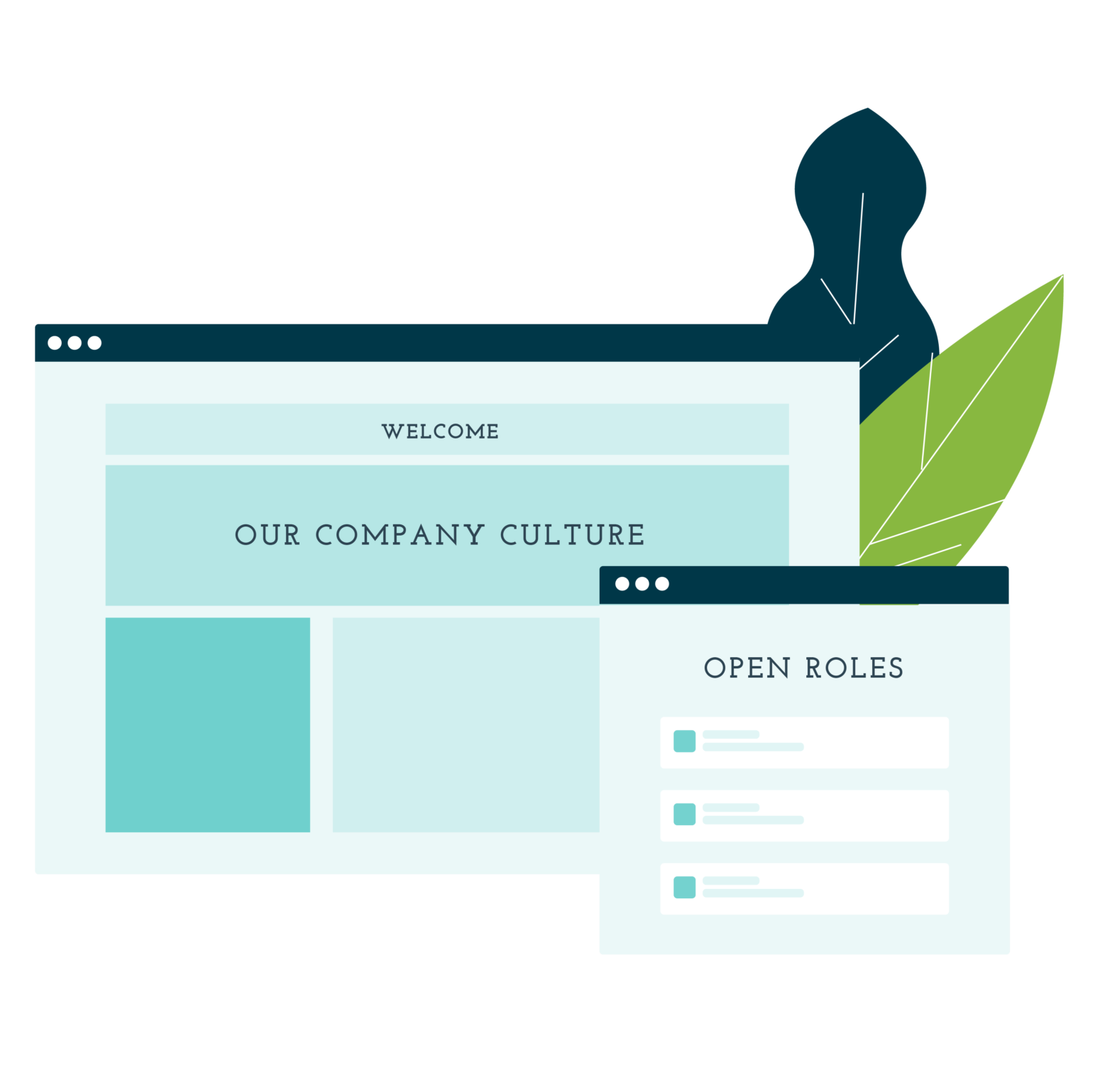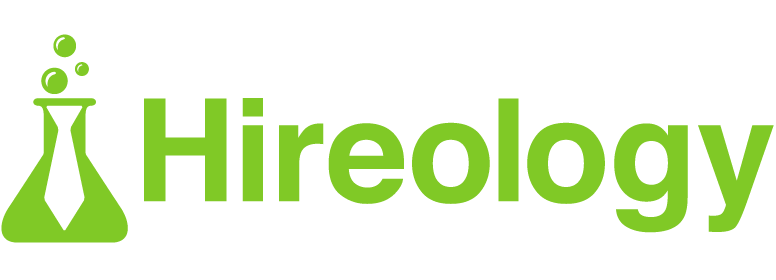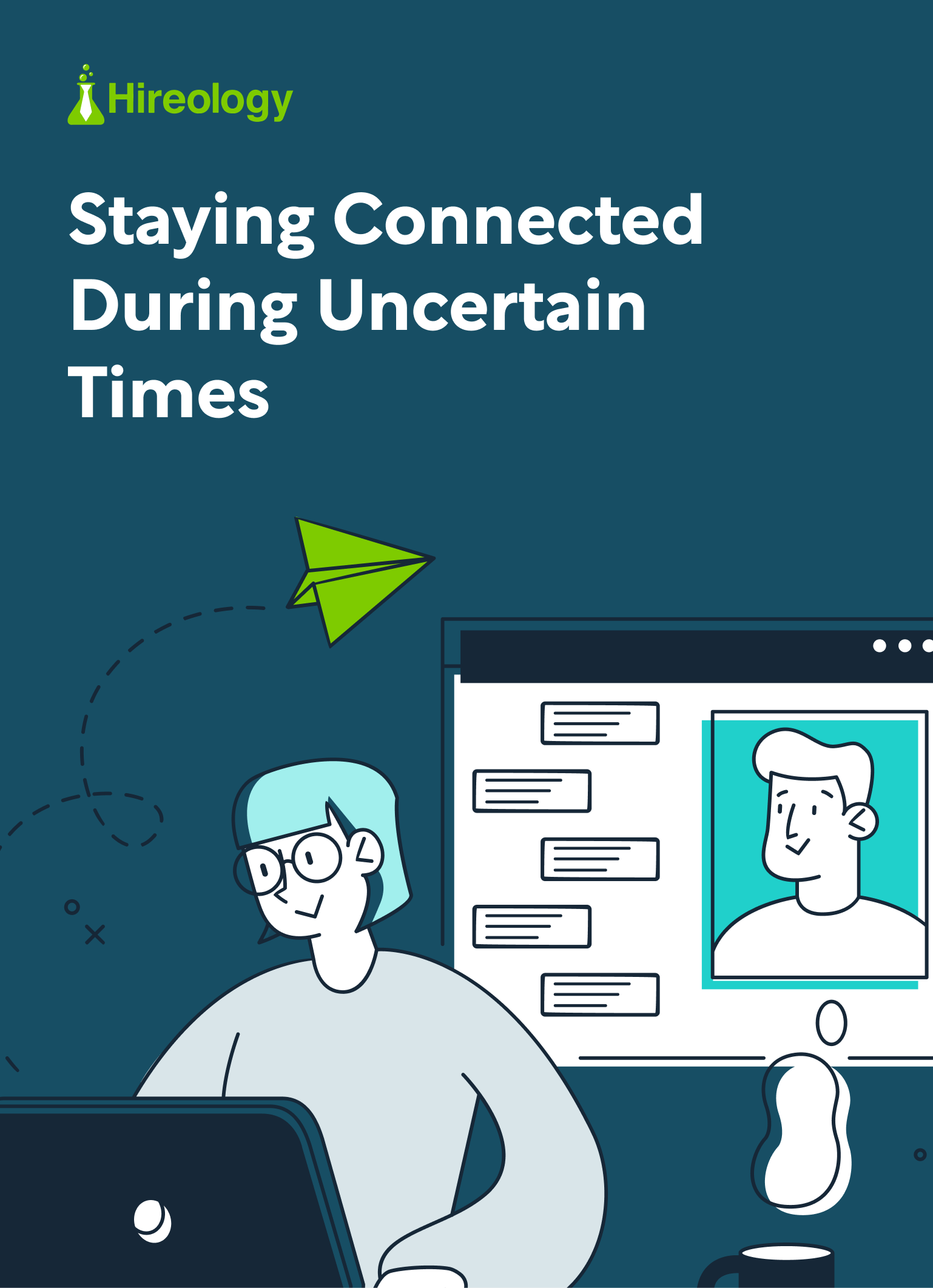Hireology Guide
Staying Connected
to Your Candidates & Employees During Uncertain Times
Foreword
Organizations across industries and around the world are facing unprecedented challenges as a result of the coronavirus (COVID-19) pandemic. While some organizations have had to temporarily halt business or lay off employees, others are looking to hire new employees as quickly as possible to meet increased demand for their goods or services.
A crisis such as the one happening now with COVID-19 leaves organizations, employees and job candidates with a lot of questions. While nobody can predict to what extent COVID-19 will impact any given business long-term, employers need to make employee and candidate communication a priority.
Employees are any organization’s top source of competitive advantage and the companies that prioritize the people side at all times are set up for success in the long haul. At the same time, a lot of other steps – outside the people side of the business – need to be taken to drive business success during these uncertain times.
In this eBook, we’ve outlined several tips for your team to stay connected with both candidates and employees and save time each step of the way, so your team can focus on overcoming challenges related to the crisis at hand.
Attract Qualified Candidates
Your people are critical to the success of your business in both good and challenging times. Whether you have an immediate hiring need or are putting hiring on hold for the time being, it’s always important to have a strong employer brand to build a pipeline of qualified talent.
Build a Strong Employer Brand
Job seekers have many options when it comes to researching and applying to new roles. Between job boards, social media sites, company career sites and referrals, it can be challenging for employers to break through the noise and reach top job seekers where they’re searching for their next career move. Because of this, you need an employer brand and career site to attract top talent.
An employer brand is ultimately an organization’s reputation as a place to work. Nearly 70 percent of job seekers would reject an offer from a company with a bad company reputation. Ultimately, you need a compelling answer to the “What’s in it for me?” question through your employer brand.
As part of your employer brand, your career site should include strong, SEO-friendly job descriptions, defined career paths across departments, employee testimonials, a comprehensive list of benefits and continuous job openings.
Also make sure to link to your career site in postings on job boards and other channels, as the most engaged job seekers will take the time to read through your employment brand materials before applying. By building and maintaining a strong employment brand and career site, you can attract engaged applicants who are interested in growing their careers with your team.
Even if you’re not hiring right now, building and maintaining a top-notch employer brand takes time. Employees will always be a differentiator for your business and prioritizing your employer brand now, you can set yourself up for future success.

Helpful Resource
The Employer Brand Playbook
Today’s applicants need to see more than a list of requirements to apply for a new role. Uncover to build your online reputation and employer brand.
Write Effective Job Descriptions
One way to convince top applicants to apply to your open roles is through effective job descriptions. Your job descriptions give you the opportunity to sell the most in-demand applicants on your open roles and your organization as a whole, so it’s important to focus on more than just the requirements of your roles.
Your job descriptions should begin with a detailed company overview that touches on such things as location, company history, culture, awards, community involvement and career growth. You should also highlight benefits, responsibilities and key requirements of each role, so job seekers can gauge whether or not they’re truly a fit before applying.
While some of your roles might require specific certifications, your job description should also highlight preferred competencies, rather than specific required experience. For example, if you’re looking to hire for a sales role, you can highlight the need for applicants who have strong customer service skills. Especially given the fact that many job seekers at the moment might be applying to your open roles from outside industries, this will help ensure you’re not limiting your talent pool to applicants who have direct industry experience.

Helpful Resource
Writing Effective job descriptions
Get our guide that walks you through several steps for creating effective job descriptions.
Keep Candidates Engaged
Whether or not you’re hiring now, it’s critical to keep candidates you’ve already been in touch with engaged and update them on potential next steps in regards to joining your team.
Review Candidates Quickly
If your team doesn’t have a strategy in place to efficiently manage your hiring process, you’ll risk losing top talent to other job opportunities. At Hireology, we’ve coined the term “lost applicant” to refer to this phenomenon.
To avoid lost applicants at your organization, the first step you can take is reviewing applicants in a timely manner. Hold all of your hiring managers accountable to setting aside time each day to review applicants – so no applicant goes unnoticed for more than 24 hours. Once applicants are reviewed in a timely manner, your team should reach out to all applicants in one way or another – either to close the loop if they’re not a fit or move forward with next steps.
Boost Engagement with Text Messaging
To save your team’s time and prospective candidates time, you can tap into candidate messaging. This will enable you to dedicate time to more pressing priorities during this stressful period. Text messaging can help you keep candidates engaged and avoid either a lengthy email chain or playing phone tag with candidates.
Candidates are more likely to respond to text messages than they are to other forms of communication. Candidates are also more likely to respond to text messages than they are to other forms of communication.
According to Hireology data, across industries, candidate text messaging has a 71 percent average response rate, which is 19 percent higher than candidate emails.
You have several opportunities to tap into candidate text messaging during the hiring process. Some examples include: reminding candidates to take a pre-screen survey to move forward with the hiring process, coordinating interview times and sharing directions to your business location. Candidates can also easily reach your team to confirm interview times, reschedule an interview or clarify directions.
If you’re putting hiring on hold for the time being, you can keep in touch with candidates to let them know you’re still excited about the possibility of them joining your team once you have an immediate hiring need. Since you’ll already have their contact information on hand, you can reach out to qualified candidates via text message in a few weeks or months, ask how their job search is going and share any relevant open roles on your team.

Helpful Resource
Candidate Engagement Playbook
Use this guide to get up to speed on candidate communication best practices and plan your own strategies to put in place.
Verify Candidate Qualifications
Just as it’s important to keep candidates engaged, it’s also important to complete all hiring steps to ensure candidates are qualified before extending a job offer. At a time when many organizations are working in a remote capacity – and candidates can’t be brought on site for interviews – screening and verification tools are more important than ever.
You need to hire the best team possible to set your team up for long-term success no matter the economic conditions, and with influx of applicants, it’s helpful to tap into additional tools to ensure you’re hiring qualified candidates. Lets walk through the steps you can take to engage and screen candidates – during this unprecedented time period and always – in the following sections.
Complete Prescreen Surveys
With significant disruptions facing hospitality, entertainment, retail and gig-economy workers, organizations across other industries may soon see a significant increase in job seekers. One way to speed up the initial review process when you receive an influx of applicants is by leveraging prescreen surveys.
By tapping into prescreen surveys, as soon as applications are submitted, automated emails are sent to candidates with a link to the survey. The typical format for these surveys is a series of true/false questions, which only take candidates a few minutes to complete.
Prescreen surveys can include knock out questions to weed out candidates who won’t work for your open roles. For example, you can ask if an applicant has a valid driver’s license. If a driver’s license is a requirement of the role and the applicant answers this question as “false,” he or she will be removed from the hiring process and sent an automated rejection email.
Applicants who score well on prescreen surveys can immediately move forward with next hiring steps. This will save your team time that would have otherwise been spent reviewing applicants who aren’t a fit.
Distribute Skills Tests
According to a recent study, 93 percent of Americans know someone who has lied on a resume. An applicant might say he or she has extensive customer service experience or is an expert in Photoshop, but skills tests can help you ensure this is truly the case before extending an offer. Skills tests are especially important if you’re concerned you won’t learn everything about a candidate’s skills in the absence of in-person interviews.
One type of skills test can help you gauge a candidate’s hard skills – meaning the technical skills a candidate needs to succeed in your open role. Using this type of skills testing, you might test on basic math comprehension, caregiver requirements, sales expertise or Google Suite Skills among other areas depending on the role.
The other type of skills test that’s important for your team to run is a soft skills test. These skills tend to be less technical, but key to success in most jobs and might include social etiquette, compassion, business vocabulary or customer service capabilities.
Hard and soft skills tests are available for specific roles, such as accounting, office administration, and many more. Each assessment can be completed by candidates in about 15 minutes, and tests are automatically scored with the results sent directly to the hiring manager – saving your team time, so you can focus on other important tasks.
Conduct Phone & Video Interviews
If you can’t meet with candidates face-to-face for interviews, you can still move forward with your hiring process by offering qualified candidates phone and video interviews – rather than putting hiring on hold and risking missing out on top talent.
If you’re like many employers, chances are you already kick off the interview process with phone screens to save your hiring managers time during initial hiring steps. But video interviews might be new to you.
A variety of free tools are available for your team to complete video interviews – including Google Hangouts, FaceTime and Skype – and many candidates likely already have access to these tools. If your team doesn’t already invest in a web conferencing platform such as GoToMeeting or Zoom, you can easily make the transition to video interviews with readily-available tools outlined above.
Video interviews enable you to get to know candidates on a deeper level than phone interviews alone – you can gain a better understanding of candidates’ body language, communication skills, personality and professional appearance that wouldn’t otherwise shine through during a phone interview.

Helpful Resource
interview best practices
Get to know candidates and better gauge their fit for your open roles with our interview guide.
Send Automated Reference and Background Checks
Candidates might ace your prescreen surveys, interviews and skills tests, but to save your team from a poor hire or potential liability down the road, you should verify each candidate before extending a job offer. Verifying candidates is important at all times, but it can also give your team added peace of mind that candidates are actually the right choice if you’re hesitant given lack of in-person interviews.
Candidate verification can be completed through automated reference and background checks.
For reference checks, candidates simply fill in their references’ contact information and surveys are automatically sent out. This saves your team from playing phone tag with potential references – which would ultimately slow down the hiring process. And for background checks, candidates submit the required personal information and the rest of the process is taken care of automatically.
Stay Connected with Employees
If you have the right people in place, your team might face some challenges when changes or crises come their way, but they’ll ultimately be able to adapt to these changes and continue driving productivity for your organization.
A crisis such as the one at hand with COVID-19 leaves your employees with a lot of questions. It’s important for your team to stay connected with one another each step of the way – even if you can’t meet with your team in person.
Maintain Transparency Through Your Communications
Now more than ever, it’s critical to ensure you have a proactive, transparent employee communications plan in place. Below, we’ve outlined several tips to help ensure you’re getting employees the information they need during uncertain times.
With your communications during times of crisis, first and foremost, it’s important to be upfront and transparent with employees. Outline the current situation and how it impacts your business – along with any changes your organization might be making to adapt.
Beyond maintaining transparency, your team should make sure to communicate early and often. Company-wide communications should come from trusted sources such as a leadership team member or HR. Send out all-company emails as you have updates, letting employees know you understand the times are stressful and next steps for your organization.
While there are a lot of unknowns with the COVID-19 pandemic or any crisis, it’s critical to keep employees informed each step of the way – and be transparent in all your communications. Your team might not have all the answers to every question right away, but you can show employees you understand their concerns and they’re taken care of by keeping communication flowing as you have updates.

Helpful Resource
Communicating with Employees
Get meaningful tactics on maintaining your team during the most extraordinary of circumstances.
Empathize with your Employees
The challenges surrounding COVID-19 has thrown a wrench in many employees’ daily routines. Not only are a significant number of employees now working from home to practice social distancing, but other important parts of their day-to-day lives have been impacted as well.
With schools and childcare centers closed, many working parents will have to take breaks during the workday to care for or homeschool their children. Others might need to go check on an older neighbor or relative to make sure they have enough groceries and other necessary supplies.
By understanding that this is the “new normal” – for now – you can support employees as they take on family and personal responsibilities during this difficult time. And respecting personal obligations will make employees feel valued, ultimately boosting long-term employee loyalty, even after this crisis has passed.
Encourage Team Interaction
While situations such as the COVID-19 pandemic mean your day-to-day business operations have changed, your organization should do your best to stick to your normal schedule and keep up your cadence of communication when possible.
Your team can still hold your regular meetings if you’re working remotely and turn them into a video conference. Or, if a teammate has a question for a colleague that he or she would usually ask in person, encourage them to set up a quick video call. Some teams at Hireology have even set up daily all-team video calls or daily one-on-ones between managers and direct reports.
Not only can improved communications ensure your team is set up for success when they’re away from the office, but it can also help employees avoid feeling isolated while they’re doing their part to practice social distancing at this time.
Set Employees up for Success
Getting used to a new work environment certainly requires a period of adjustment for many employees. In these difficult times, how you engage and assist employees can fuel your employer brand and set you up for long-term success.
Give Employees Tools to Succeed
Simplify HR Tasks
A crisis such as COVID-19 is already distracting and stressful enough for your employees. To alleviate any additional stress related to their day to day work, your team should put in extra effort to make day-to-day HR tasks simple.
Starting with onboarding and throughout each employee’s time at your team, you must have effective technology and processes in place to make HR-related tasks as user-friendly as possible. If employees can’t find their pay stubs, or lose track of how many systems they need to log into – such as payroll, benefits, time and attendance and countless other systems – they might get frustrated with your organization, only leading to added stress during these difficult times.
Instead of tapping into several disjointed systems for your HR needs, your team can partner with a seamless hiring, payroll and benefits provider to decrease manual tasks. If an employee changes his or her benefits election or leaves your organization, the change will automatically be reflected across your payroll and benefits, rather than individual employees or your HR team needing to manually make updates and ensure all information is accurate.
Facilitate Digital Onboarding
While many employers are freezing hiring for the time being or waiting until employees return from a remote work setting to kick off onboarding, other employers – especially many healthcare organizations – need to get new hires up to speed sooner rather than later. Given that most employers cannot meet with new hires in person at this time, an easy way to kick off the employee experience for new hires is through digital onboarding.
Even in the absence of these unusual circumstances, the last thing any new employee wants to do when they get started is spend the entire first day filling out paperwork. Your top, motivated employees in particular will be eager to get started right away with their day-to-day responsibilities. But with the right onboarding technology in place, you can easily kick off onboarding with employees before they even get started.
By partnering with a hiring platform that seamlessly integrates with your other HR systems – such as onboarding, payroll and scheduling platforms – you can make the transition from candidate to employee seamless. With integration between your hiring and onboarding platforms, hiring data is automatically transferred to kick off a digital onboarding process – before the first day on the job.
Digital onboarding steps employees can complete as soon as they sign an offer letter include:
- Signing the employee handbook
- Filling out direct deposit information for automated payroll
- Completing tax forms
- Submitting benefits paperwork
Sharing this information with employees before the first day can keep them engaged leading up to the start date or their first shift and helps save time that would have otherwise been spent administrative tasks during the first day. And if your employees are working remotely, you can ensure they’re set up for success with your onboarding – even if they’re not physically in your workplace.
We're Here For You
The circumstances surrounding COVID-19 are changing rapidly, and no organization can predict how long the pandemic will continue to have an impact on business operations.
By building a strong employer brand now, you’ll start attracting candidates for your open roles, whether you’re hiring now or building a pool of prospective applicants for future job openings. And by being proactive about staying connected with candidates and employees, you’ll continue to keep top talent engaged and boost productivity across your current team.
Hireology is here to help you put your best team in place no matter the circumstances – if you need assistance, please get in touch by contacting your Hireology Customer Success Manager or support@hireology.com.

